Archive
Marion Palfi
- Marion
- Palfi
- 21-10-1907
- Berlin (DE)
- 04-11-1978
- Los Ángeles (CL)
- Photographer
Marion Palfi was a German émigré photographer who lived in New York from the 1940s to the 1960s. Her photographic engagement in social and political topics made her name for her use of the camera to draw attention to social injustices.
Word Count: 41
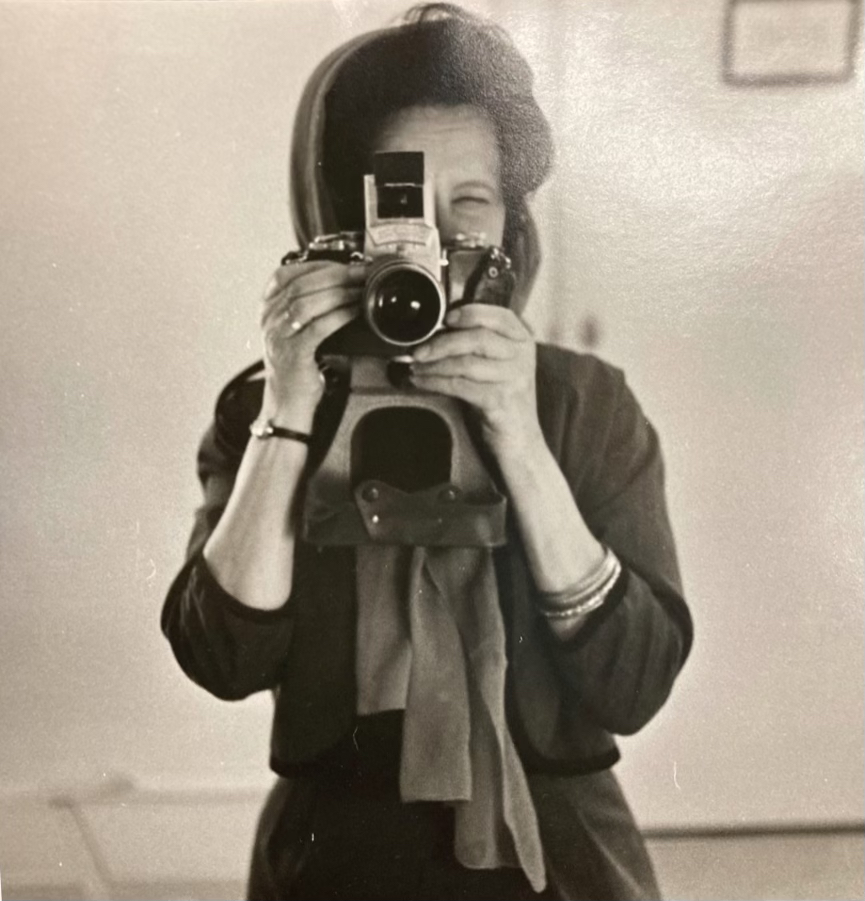
Selfportrait of Marion Palfi (© Center for Creative Photography, University of Arizona: Marion Palfi Archive). 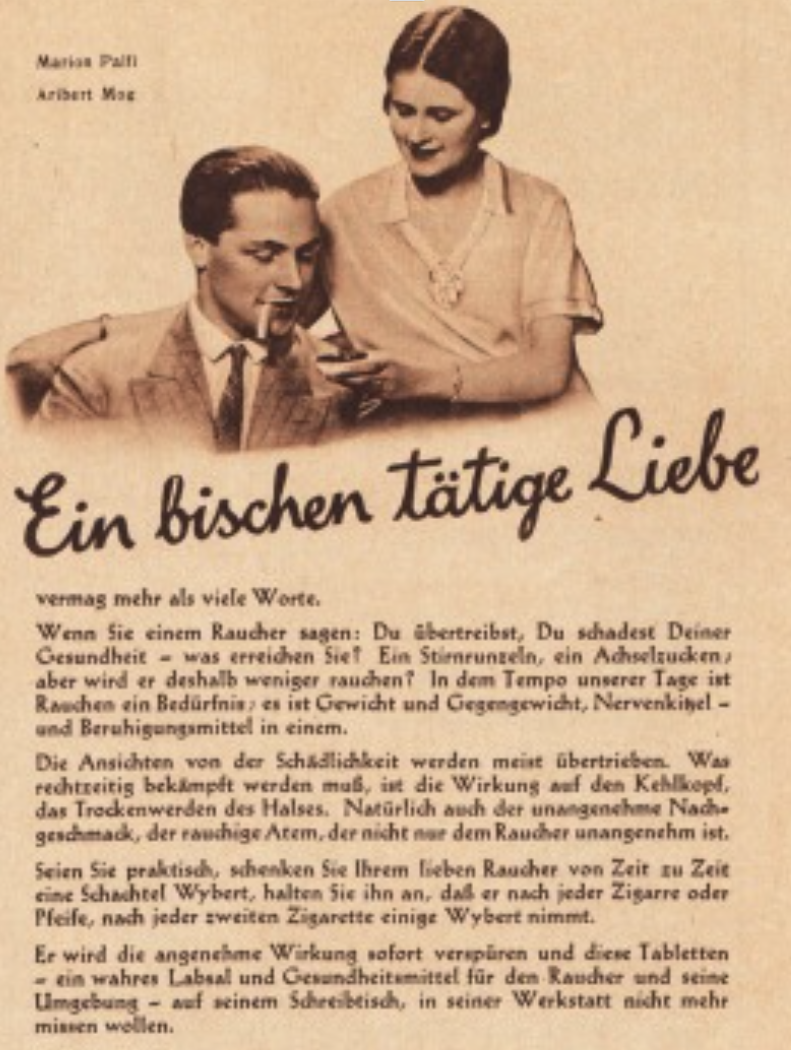
Advertisement “Ein bischen tätige Liebe” for a cigarette brand with photograph of Marion Palfi and Aribert Mog (1904–1941). Modenschau. Illustrierte Monats-Zeitschrift für Heim und Gesellschaft, no. 202, October 1929, p. 43. 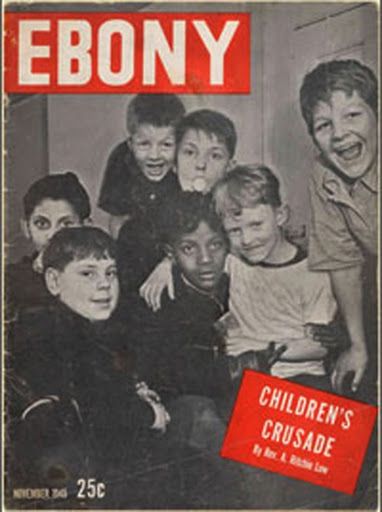
Cover of Ebony with photograph by Marion Palfi (Ebony, 1 November 1945). 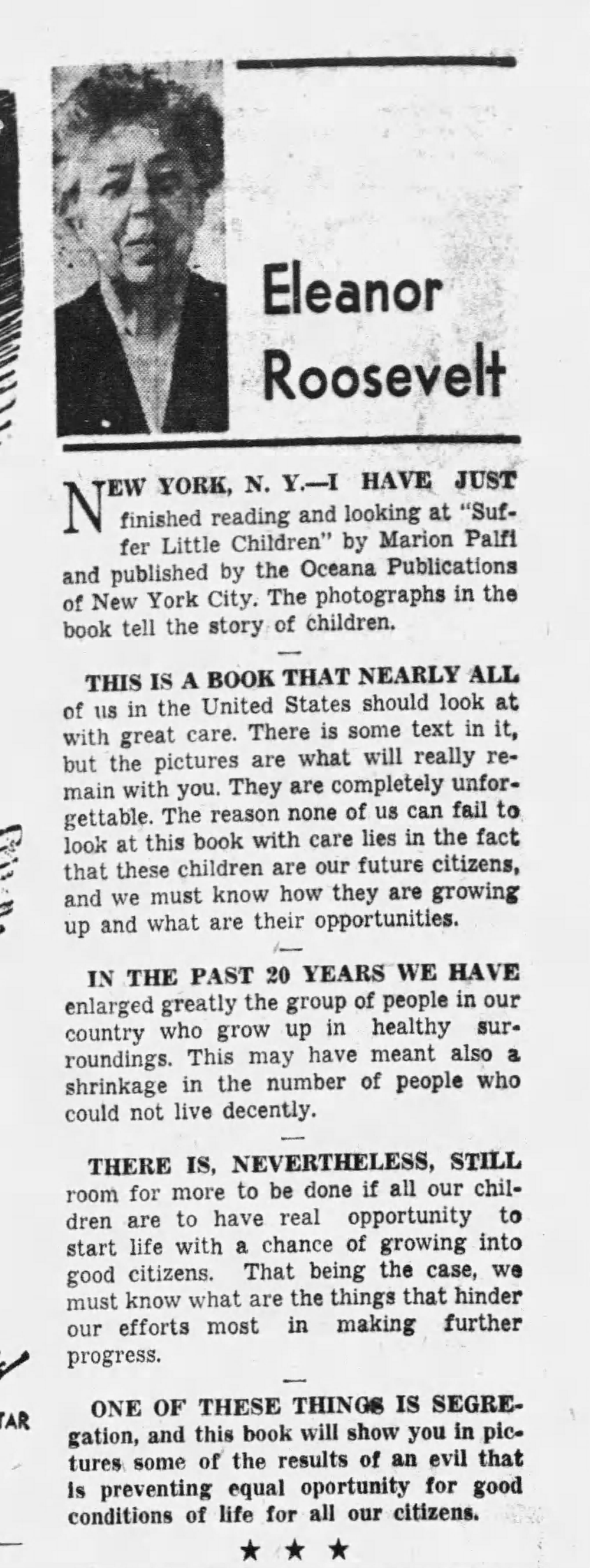
Review of Marion Palfi's Suffer Little Children by Eleanor Roosevelt published in Des Moines Tribune, 10 December 1952, p. 20. 
Article on Marion Palfi in Aufbau magazin (Craemer 1949). 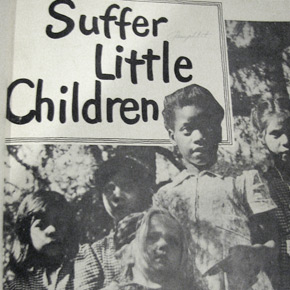
Cover of Suffer Little Children by Marion Palfi (Oceana Publications, 1952). 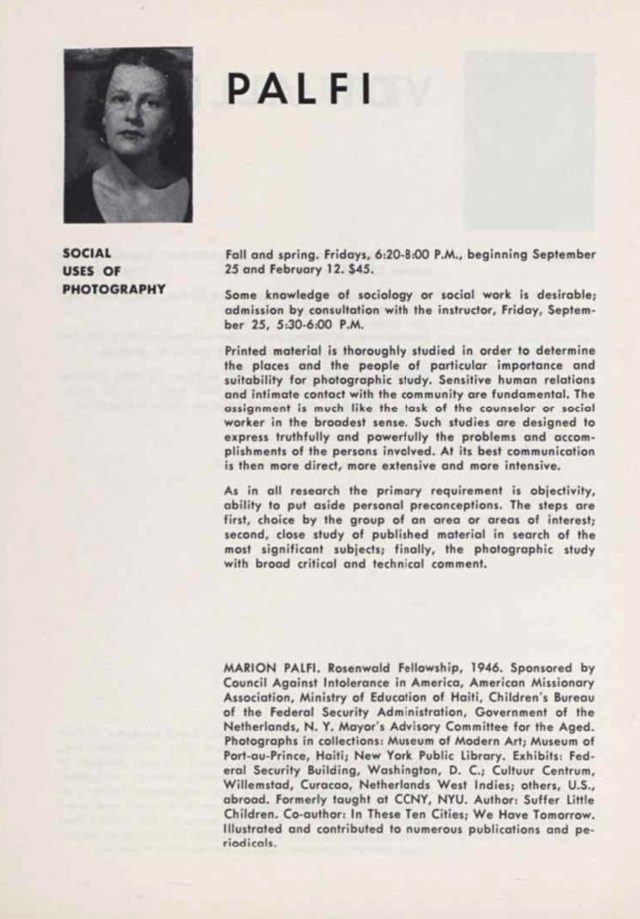
Announcement of Marion Palfi’s course at the New School for Social Research. New School for Bulletin, vol. 17, no. 2, 2 September 1959, p. 46 (© New School course catalog collection, NS-05-01-01. The New School Archives). Berkowitz, George. “Typed memo to Marion Palfi.” (unpublished material, Center for Creative Photography, The University of Arizona, Tucson, 20 April 1949).
Blair, Sara. Harlem Crossroads: Black Writers and the Photograph in the Twentieth Century. Princeton University Press, 2007.
Craener, Vera. „Marion Palfi - kämpft mit der Kamera.“ Aufbau, vol. 15, no. 5, 1949, S. 19.
Displaced Visions. Émigré Photographers of the 20th Century, edited by Nissan N. Perez, exh. cat. The Israel Museum, Jerusalem, 2013.
Ebony, 1 November 1945.
Enyeart, Jim. “Marion Palfi – Social Research Photographer.” Exposure. Journal of the Society for Photographic Education, vol. 11, no. 3, August 1973, pp. 4–6. Accessed 19 February 2021.
Gilbert, George. The Illustrated Worldwide Who’s Who of Jews in Photography. G. Gilbert, 1996.
Hudson-Wiedenmann, Ursula and Beate Schmeichel-Falkenberg, editors. Grenzen überschreiten: Frauen, Kunst und Exil. Königshausen & Neumann, 2005.
Invisible America. Exhibition of Photographs by Marion Palfi, exh. cat. University of Kansas. Museum of Art, Lawrence, 1973.
Krohn, Claus-Dieter, et al., editor. Exilforschung: ein internationales Jahrbuch, vol. 16: Exil und Avantgarden. edition text + kritik, 1998.
Marion Palfi, special issue of The Archive - Research Series, no. 19, September 1983. Center for Creative Photography, University of Arizona.Accessed 19 February 2021.
Martens, Klaus. Pioneering North America: Mediators of European Culture and Literature (Saarbrücker Beiträge zur vergleichenden Literatur- und Kulturwissenschaft, 11). Königshausen & Neumann, 2000.
New York Photography 1890–1950. Von Stieglitz bis Man Ray, edited by Ortrud Westheider and Michael Philipp, exh. cat Bucerius Kunst Forum, Hamburg, 2012.
Palfi, Marion. Suffer Little Children. Oceana Publications, 1952.
Reframing America: Alexander Alland, Otto Hagel & Hansel Mieth, John Gutmann, Lisette Model, Marion Palfi, Robert Frank, edited by Andrei Codrescu and Terence Pitts, exh. cat. Center for Creative Photography, Tucson, 1995.
Schaber, Irme. “Fotografie.” Handbuch der deutschsprachigen Emigration 1933–1945, edited by Claus-Dieter Krohn and Patrick von zur Mühlen, WBG, 1998, pp. 970–983.
Schaber, Irme. “‘Die Kamera ist ein Instrument der Entdeckung…’. Die Großstadtfotografie der fotografischen Emigration in der NS-Zeit in Paris, London und New York.” Exilforschung. Ein internationales Jahrbuch, vol. 20: Metropolen des Exils, edited by Claus-Dieter Krohn et al., edition text + kritik, 2002, pp. 53–73.
Siedhoff, Thomas. Deutsch(sprachig)es Musical. Deutsches Musicalarchiv, January 2018. Accessed 19 February 2021.
Sorgenfrei, Robert and David Peters. Marion Palfi Archive (Guide Series, no. 10). Center for Creative Photography. University of Arizona, 1985.
This was the Photo League. Compassion and the Camera from the Depression to the Cold War, edited by Anne Tucker, exh. cat. Stephen Daiter Gallery, Chicago, 2001.
Töpelmann, Cornelia. “Findbuch Nachlass Anita Naef.” Universitätsbibliothek München. Sammlung Thomas-Mann-Forum München, 2000. Accessed 19 February 2021.
Word Count: 391
Amsterdam, NL (1936–1940); New York, US (1940–1965); Los Angeles, US (1965–1978).
229 East 53rd Street, Midtown Manhattan, New York City (residence and workplace, 1940–1965).
- New York
- Helene Roth. "Marion Palfi." METROMOD Archive, 2021, https://archive.metromod.net/viewer.p/69/2948/object/5138-9604476, last modified: 01-02-2022.
-
Walter SandersPhotographerNew York
Walter Sanders was a German émigré photographer. In 1938 he arrived in New York, where he worked from 1939 until the end of his life for the Black Star agency and, from 1944, for Life magazine.
Word Count: 33
Kurt SafranskiPicture AgentFounding MemberTeacherCartoonistPublisherIllustratorNew YorkKurt Safranski was one of the founding members of the Black Star photo agency, a teacher at the New School for Social Research and the author of photojournalistic articles and books.
Word Count: 31
Josef BreitenbachPhotographerNew YorkOn arriving in New York in 1941, the German photographer Josef Breitenbach tried to restart as a portrait, street and experimental photographer, as well as a teacher of photo-history and techniques.
Word Count: 30
Andreas FeiningerPhotographerWriterEditorNew YorkAndreas Feininger, was a German émigré photographer who arrived in New York with his wife Wysse Feininger in 1939. He started a lifelong career exploring the city's streets, working as a photojournalist and writing a large number of photography manuals.
Word Count: 39
Erika StonePhotographerNew YorkErika Stone is a German émigré, who moved to New York with her parents and sister in December 1936, at the age of 12. She went on to carve out a career as photographer.
Word Count: 32
Lisette ModelPhotographerNew YorkLisette Model was an Austrian-born photographer who lived in New York with her husband Evsa Model after emigrating from France. Her street photographs capturing the curiosities of everyday life quickly caught the interest of museums and magazines.
Word Count: 37
Charles LeirensPhotographerMusicianMusicologistNew YorkCharles Leirens was a Belgian-born musician and photographer who emigrated to New York in 1941. While publishing two books on Belgian music, he also gave courses in musicology and photography at the New School for Social Research.
Word Count: 36
Tim GidalPhotographerPublisherArt HistorianNew YorkTim Gidal was a German-Jewish photographer, publisher and art historian emigrating in 1948 emigrated to New York. Besides his teaching career, he worked as a photojournalist and, along with his wife Sonia Gidal, published youth books.
Word Count: 35
Ellen AuerbachPhotographerNew YorkWhen she arrived in New York in 1937, the German-born photographer Ellen Auerbach (formerly Rosenberg) had already passed through exile stations in Palestine and Great Britain.
Word Count: 25
Ruth StaudingerPhotographerCinematographerArt dealerNew YorkVery few and only fragmentary details can be found on the German émigré photographer Ruth Staudinger, who emigrated in the mid-1930s to New York City. Her nomadic life was also characterisedd by several changes of name along the way.
Word Count: 40
Rudy BurckhardtPhotographerFilmmakerPainterNew YorkRudy Burckhardt was a Swiss-born photographer, filmmaker and painter who emigrated from Basle to New York City in 1935. He was well networked within the emerging Abstract Expressionist art scene of 1940s' and 50s'.
Word Count: 33
Chinatown U.S.A.PhotobookNew YorkChinatown U.S.A. is a photobook published by the German émigré photographer Elizabeth Coleman in 1946 focusing on American-Chinese communities in New York and San Francisco.
Word Count: 26
5th AvenuePhotobookNew York5th Avenue was the first photobook by Fred Stein and was created in 1947 with the publishing house Pantheon Books.
Word Count: 19
J.J. Augustin Incorporated PublisherPublishing HouseNew YorkJ.J. Augustin was a German publishing house in Glückstadt with a long history, going back to 1632. In 1936 the American branch opened in New York with a large artistic and cultural focus.
Word Count: 33
Pantheon BooksPublishing HouseNew YorkPantheon Books was a publishing house founded in 1942 by the German émigré Kurt Wolff (1887–1963) and aimed at the exiled European community in New York.
Word Count: 24
Oceana PublicationsPublishing HouseNew YorkOceana Publications Inc was a publishing house specialising in law and civil rights founded by the British émigré Philip F. Cohen (1911–1998) in 1945.
Word Count: 22
New School for Social ResearchAcademy/Art SchoolPhoto SchoolUniversity / Higher Education Institute / Research InstituteNew YorkDuring the 1940s and 1950s emigrated graphic designers and photographers, along with artists and intellectuals, were given the opportunity to held lectures and workshops at the New School for Social Research.
Word Count: 31
Norlyst GalleryGalleryArt GalleryNew YorkFounded in 1943 by the American painter and art collector Elenore Lust, the Norlyst Gallery represented a cross section of contemporary painting, photography and other media focusing on surrealist and abstract expressionist styles and promoting women artists and photographers.
Word Count: 38
Beggar BarBarNew YorkBeggar Bar was an artists bar and cabaret which was founded in 1941 by the German actress and dancer Valeska Gert (1892–1978).
Word Count: 20
Pavelle Laboratories Inc.Photo LabPhoto SupplierNew YorkPavelle Laboratories was found in 1936 by Leo and Carmen Pavelle and operated on East 42nd Street. It was specialised in the development of miniature camera film and one of the first labs working with colour film.
Word Count: 36
Alexey BrodovitchPhotographerArt DirectorGraphic DesignerNew YorkAlexey Brodovitch was a Belarus-born émigré graphic artist, art director and photographer who, from 1933, worked in New York for Harper’s Bazaar magazine and at the New School for Social Research.
Word Count: 31
Lotte JacobiPhotographerNew YorkIn October 1935 the German émigré photographer Lotte Jacobi, together with her sister Ruth Jacobi, opened a photo studio on 57th Street. The two sisters had to leave their parents' photo studio in Berlin in the 1930s and emigrated to New York.
Word Count: 41
Lilly JossPhotographerNew YorkLilly Joss was an émigré freelance photographer in New York. She worked for the Black Star photo agency and magazines and was also a portrait and theatre photographer.
Word Count: 28
YllaPhotographerNew YorkYlla was an Austrian-born photographer who emigrated to New York in 1941. Specialising in animal photography, she produced not only studio photographs, but also shot outside on urban locations in the metropolis.
Word Count: 31
Carola GregorPhotographerSculptorNew YorkThe German émigré photographer Carola Gregor was an animal and child photographer and published some of her work in magazines and books. Today her work and life are almost forgotten.
Word Count: 30